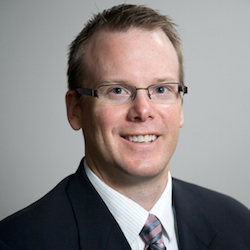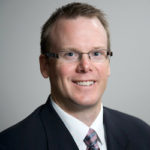
As demands in 21st-century senior living challenge us to transform our care delivery models, senior living communities must walk a fine line between required vigilance and resident independence. With today’s broader campuses, more active seniors and specialized levels of care, staff must respond to emergencies and requests wherever the resident may be, while keeping track of individuals in a way that is minimally intrusive.
Here are three ways that new technology can improve staff efficiency and resident quality of life in today’s senior living communities:
1. Passive monitoring
Caregivers are always trying to strike the right balance between resident independence and safety. Passive monitoring has two key benefits. First, it saves time by eliminating the need for caregivers to constantly check in on residents. With fewer interruptions, residents feel a greater sense of privacy and independence. Passive monitoring also eliminates the need for residents to proactively take an action such as pushing a “check-in” button.
Russel Crews, president and CEO of C. C. Young, agrees with the value of passive monitoring.
“C. C. Young has dedicated considerable resources so that its residents can live as safely, and autonomously as possible,” he said. “Resident care is our utmost concern. We want to support their needs and also provide the amenities they desire.”
2. Personalization
By investing in a unified, scalable platform for emergency call, wander management and activity-based passive sensors, facility operators can personalize resident monitoring based on specific resident needs.
The latest technology expands on traditional well-being check-in features, adding options to personalize alerts based on a variety of risk factors (For example, if a resident who is a fall risk leaves his or her bed, you can personalize the bed pressure mat sensors so that if the resident doesn’t return within a reasonable amount of time, an alert is sent).
Resident activity monitoring is more important than ever, given the serious consequences of falls. The Centers for Disease Control reports that one in four Americans aged 65+ falls each year and that falling once doubles the chances of falling again. Studies show that people with dementia are at an even greater risk, with an annual fall incidence rate as high as 60%.
According the Alzheimer’s Association, at least half of all residents in assisted living and nursing homes have some form of cognitive impairment, most often resulting from Alzheimer’s disease or related dementia. As the volume of Americans with Alzheimer’s disease increases, strategies to prevent unsafe wandering and elopement will become increasingly important.
With the addition of wireless components, technology solutions such as Ascom’s teleCARE IP 9.0 sensor devices are creating even more opportunities to deliver personalized care and monitoring:
- Wristband/pendant – The latest wearable devices enable residents to call for help while maintaining their sense of independence as they move around a facility. They also can be configured to detect motion activity, location and device removal (infrared).
- Wireless motion sensor (passive infrared sensors) – Programmable sensors enable automatic notifications customized to each resident.
- Wireless universal transmitter – In addition to providing automatic notifications, customizable wireless transmitters enable portable integration with third-party wired sensors, such as bed exit pressure pads or fixed-door status monitoring.
- Low-frequency beacon – These easy wireless add-ons support intelligent alert and wander control solutions via enhanced floor, corridor, room or door-level location accuracy.
3. Presence
Measuring “presence” is helpful from a care-level perspective because it helps operators measure how much care certain residents require. This not only is beneficial on a clinical level but also as it relates to fee structures and pricing models.
The latest software enables operators to capture relevant analytics more easily and assist with their facility’s quality measures. With peripheral stations, buttons can be configured for separately registering presence, and an integrated RFID reader can be used to establish presence with credentials. Event activity is automatically documented, resulting in audit trails.
Presence also can help set you apart from competitors. For many families, detailed analytics can provide valuable peace of mind. For example, with the right monitoring software and tools, you can show family members the specific level of care their loved one is receiving (example: how often they are asking for assistance, and how quickly that assistance is provided).
Conclusion
As campuses expand and the senior population grows, now is the time to consider an investment in strategic healthcare information and communications technology Equipped with the right solutions, senior living communities can make optimal decisions and continuously improve care and safety.
John Sola is Ascom North America’s business development manager for teleCARE IP and the senior living and long-term care sectors. He has worked in the healthcare communications technology world for 25 years, developing national and international manufacturer partnerships, channel programs and new telephony and IP-based products and services to enhance senior safety and independence.
McKnight’s Senior Living welcomes marketplace columns on subjects of value to the industry. Please see our submission guidelines for more information.




